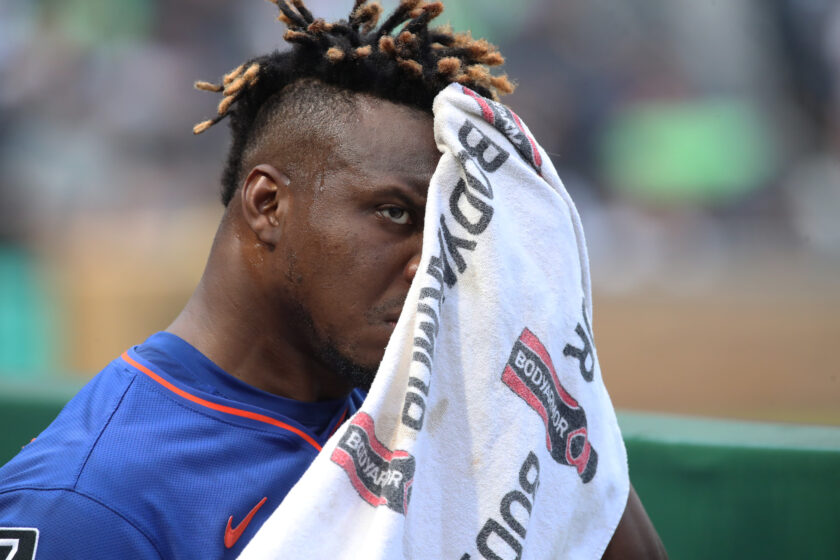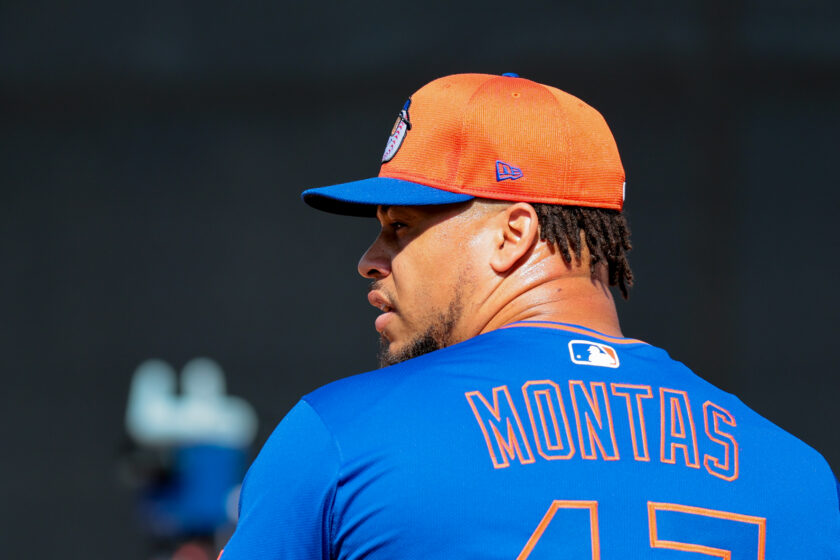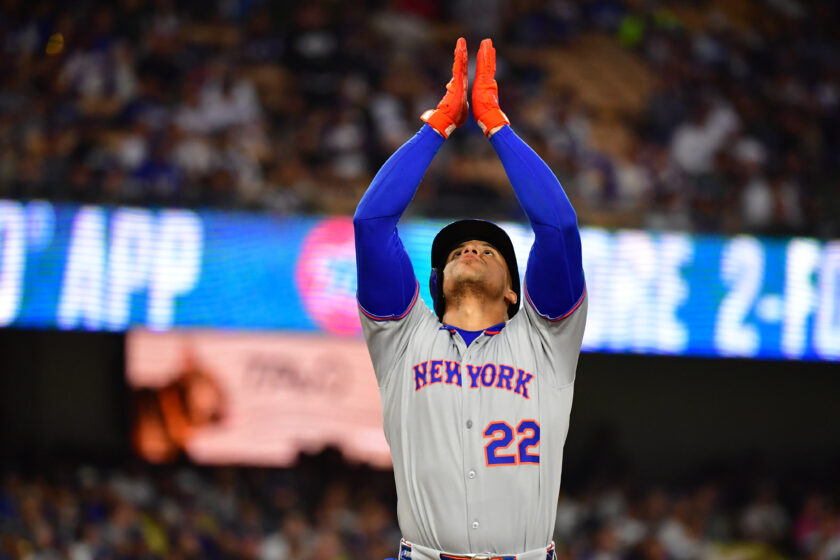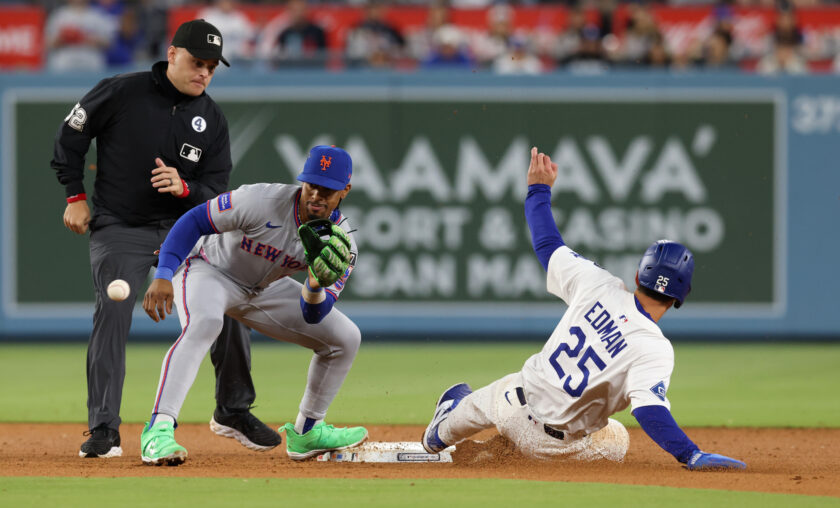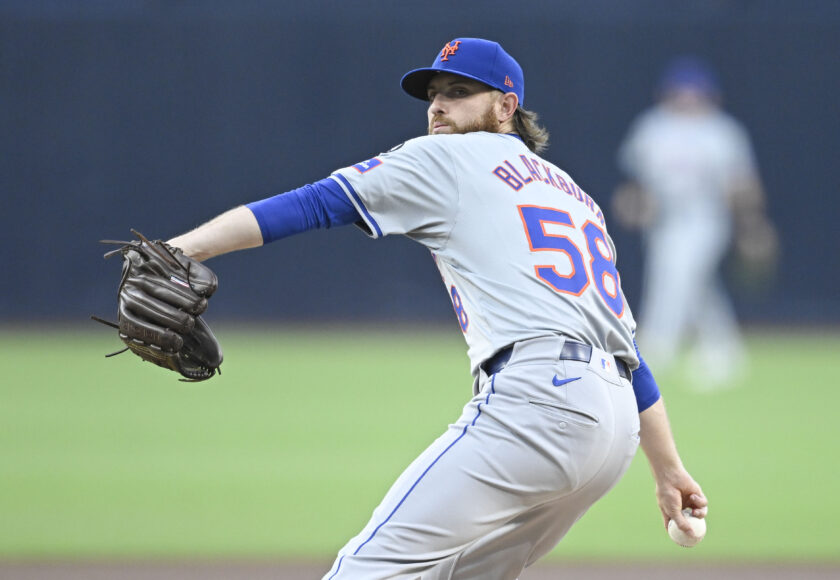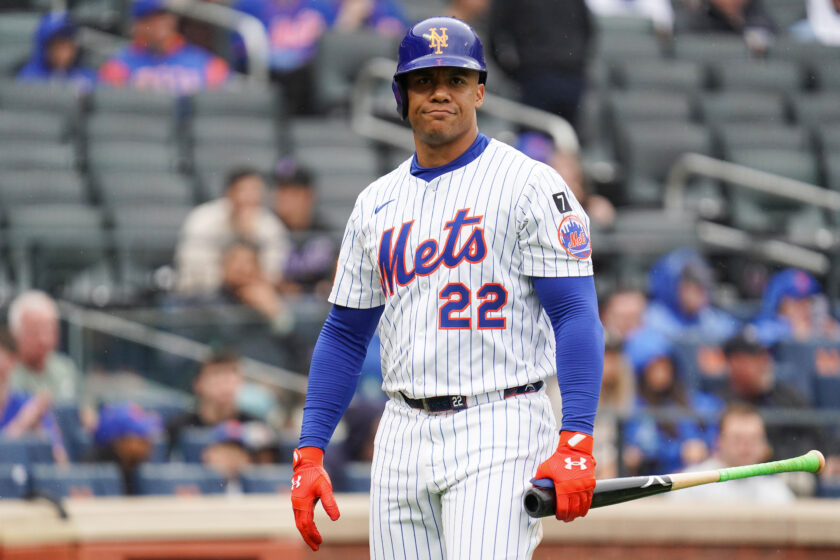New York Mets prospect Brett Baty is the total package
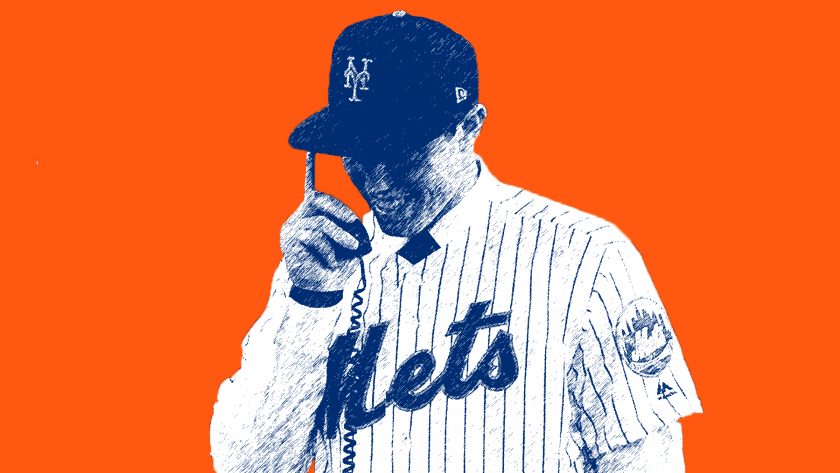
With the 12th Pick in the 2019 MLB Draft, the New York Mets selected Brett Baty. This kid could be special.
After months of speculation surrounding the 12th pick, the New York Mets shocked everyone with their selection of Brett Baty. The entire scouting community had pegged the Mets to select a college pitcher with this pick and disregarded the possibility that a high school bat was even in consideration.
After weeks of rumors that the Mets were targeting Kentucky left-hander Zack Thompson, they selected third baseman Brett Baty. He was one of the oldest prep players in this year’s class at 19 and a half years old. That didn’t stop the Mets, and with good reason. Baty is the most polished hitter in this year’s prep class. He grew up in Texas and attended Lake Travis HS in Austin.
Baty had planned on attending the University of Texas in the fall, but the Mets lured him away from that commitment with a signing bonus of $3.9 million. That is about $400,000 short of the allotted slot for the 12th pick.
Since then, Baty has been assigned to play in the Gulf Coast League, where he quickly showed he was too good for the competition. After only two weeks in the GCL, Baty was promoted to Kingsport, and while he initially struggled there, he had back-to-back multi-hit games. Both of those games included extra-base hits. Baty looks like the quick moving prep bat they thought they were getting when they selected him in June.
Key
20 – Awful
30 – Well Below Average
40 – Below Average
45 – Fringe Average
50 – Average
55 – Above Average
60 – Plus
65 – Plus-Plus
70 – Well Above Average
80 – Elite
Hit – 55
Baty has shown a knack for making contact to this point in his career. He has a clean and beautiful left-handed swing. Baty has the bat speed to keep up with fastballs up in the zone and has great barrel-to-ball skills. Baty is constantly making hard contact, which is a good indicator of a player with a good feel for hitting. His pitch recognition skills are also well ahead of the curve, and that is proven by his ability to hit breaking balls.
Baty has had issues with strikeouts during his time in Kingsport due to the fact he’s never seen breaking balls as sharp as those before, but he’s quickly adjusting. If Baty’s hit tool hits its ceiling than he’s likely a .300-plus hitter. More realistically, Baty looks like a future .270-.280 hitter who takes his fair share of walks.
[sc name=”Mets Center”]Power – 65
Baty is a big kid measuring at 6-foot-3 and 210 pounds, and he puts that big frame to great use in-game. In high school this season, Baty hit 19 home runs, six doubles, and three triples in just 39 games. That’s 28 extra-base hits in 98 at-bats, which is an extra-base-hit rate of 28.6%.
To put that in perspective, Pete Alonso only has a 14% extra-base-hit rate. While Baty hasn’t continued to hit with quite that much power since he was drafted, he has still crushed the ball.
Baty has two home runs and four doubles in just 11 games. That’s six extra-base hits in 41 at-bats. If Baty continues to hit for power, at this rate he could end up being one of the best power hitters in baseball. Realistically Baty has a chance to be a 35-plus home run threat in the future.
Speed – 40
Baty’s big body does make a lumbering runner. He’s a below average runner, but that doesn’t tell the whole story about him. Despite his lack of speed, Baty is athletic for a guy his size. Baty will likely never be a base stealer, but his lack of speed shouldn’t be a hindrance to any part of his game.
There is a real fear that Baty will lose even more speed and athleticism as his body continues to fill out. For now, Baty’s speed and athleticism isn’t as big an issue as the grade makes it out to be.
Arm – 60
The reason that Baty is playing third base and not first is because of his plus arm. Baty can make any throw that he would need to. A former varsity quarterback, Baty has one of the best arms in this class.
His plus arm is a huge advantage for him. If he is forced off of third base later in his career, due to a lack of quick-twitch athleticism, he should have no issue in left field. His arm would play up even more in left field than it does at third base. Baty’s arm is a huge deal as a prospect because the Mets will have options other than first base if third doesn’t work out. That makes a much more valuable prospect.
Field – 45
Baty needs to prove that he can stay at third base long term. Coming into the season, there were a lot of questions asked about his defensive ability. To his credit, he played third all season and showed dramatic improvement from the year before.
Still, there are many who question his ability to stay at the position long term. Baty is athletic enough and has a good enough arm that left field shouldn’t be an issue if third base doesn’t work out, but the hope is he stays at third long term.
Fielding is the hardest tool to predict into the future, as can be seen from two Mets. Pete Alonso came into the year with people thinking he was going to be a disaster and not even playable at first. Instead, he has been worth 0 defensive runs saved, which puts him 10th in the league.
Juan Lagares is another example of why it’s so hard to predict future defense. As a prospect, he was only considered an average defender in center field. He came to the Mets and immediately became the best defensive center fielder in baseball in 2013. Just keep that in mind when looking at minor league defensive scouting reports.
[sc name=”Mets Link Next” link=”https://elitesportsny.com/2019/07/12/new-york-mets-midseason-report-card-high-marks-for-pete-alonso/” text=”New York Mets Midseason Report Card: High Marks For Pete Alonso” ]A contributor here at elitesportsny.com. I'm a former graduate student at Loyola University Chicago here I earned my MA in History. I'm an avid Mets, Jets, Knicks, and Rangers fan. I am also a prodigious prospect nerd and do in-depth statistical analysis.

